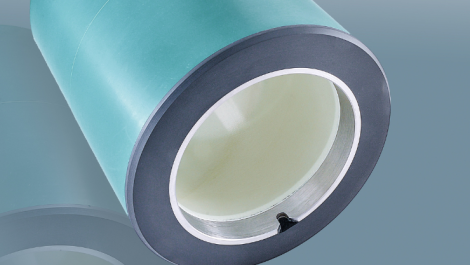With the first drupa in eight years on the horizon for 2024, Sean Smyth looks at the developments likely to come in flexo over the next year.
Next year drupa will be back, the first one for eight years. It is highly anticipated, and many conversations I have had with people in the industry have suggested a subtle evolution. It can best be summarised like this: ‘Drupa is no longer druck und papier; next year it will be druck und packaging’.
On the flexo front, I don’t expect that flexography will be radically re-invented and disrupted. There will certainly be developments and improvements on show aimed at further boosting quality and productivity, while lowering the environmental impacts of printing. Flexography 4.0 will be on show and companies utilising the tools that are coming to market will gain many advantages.
Forecasting the future is prone to a lot of wild assumptions that never come to pass. I prefer to think about things that probably won’t change just as much as the sexy (for a time at least) headlines and wow factors. Areas that will remain important for flexo printers will be customer demands for optimal print quality, rapid turnaround and lowest prices, and these will not change, so new technology has to fit in with them.
Flexo printers will have new choices on digitised workflow, platemaking, combinations of plates/anilox/inks, sleeves and tapes, press automation, control and ease of use. Functions that were expensive options a couple of years ago will become must[1]have standard components in new presses, including plate cleaning, high resolution inspection systems, robotic load assist for reels and plate sleeves, and, importantly, connections into wider networks.
Cleaning up prepress
Tresu offers its Printing Plate Cleaner, an automatic non-contact system that can clean the plate during production or carry out an intensive clean at job end for plates that will be re-used. While originally designed for the dirty and dusty tissue sector, this will be valuable for presses in corrugated, then labels and flexibles.
There will be more camera and spectrophotometer inspection systems, not just on-press or on rewinders. Keeping anilox rollers clean and open is necessary for high quality flexo, and MicroDynamics LLC offers a new wider field mode on its Veritas inspection system, allowing users to inspect a wider range of anilox rolls with one lens. This expands the field of view to twice the height and width, to cover screen counts from 120lpi to more than 1500lpi.
There will be new plates and exposure systems, reducing the use of solvent and the cost of platemaking. This will make it more affordable for converters needing to take plate production in-house to improve their levels of service to customers, including plate imaging, processing and cutting to size. In prepress, AV Flexologic has automation technology that is Packaging 4.0 ready. Sleeves are retrieved from the vertical Sleeve Storage System automatically on a Tech Cart to the Tape Applicator/ Demounter for tape application. Precise depth adjustment of the cutting knife stops the sleeve surface being damaged, then plates are mounted without operator interaction to a 5µ tolerance, reducing press downtime from mis-mounted sleeves, and helping the growing use of expanded gamut process printing. AV Flexologic offers the EasyReg mark, which sets the plates into the zero position automatically, speeding make[1]readies.
Flexo inks are becoming more sustainable. There is movement toward water-based from solvent inks, reducing VOC emissions. Some presses are hybrid solvent/water-based designs. Sun Chemical follows a 5-R approach to sustainability – reuse, reduce, renew, recycle and redesign – when developing inks and coatings. Sun Chemical’s goal is to reach carbon neutrality by 2050, benefitting its direct customers and the brands they serve. The renew trend means both using renewable energy and formulating products with significantly higher levels of bio-renewable raw materials, while not impacting press performance or cost. To boost recycling, SunSpectro SolvaWash FL is a washable/de-inkable, solvent-based flexo ink helping increase shrink sleeve label recyclability, allowing higher quality and yield of recycled PET from bottle recycling streams.
There will be more standardisation. Pulse Roll Label Products has its Monolox Fixed Anilox series, helping converters maximise uptime and reduce ink consumption. Pulse managing director Gary Seward commented, ‘With PureTone inks and Monolox Fixed Anilox Printing, we’re fulfilling our commitment to help printers boost accuracy, efficiency and throughput by effectively making flexo label printing more efficient than digital, and at a fraction of the cost. Using PureTone inks and a bespoke mixing database, printers can use this cutting-edge technique to make any spot colour, using just one anilox volume. This has unprecedented benefits for print efficiency, providing high-speed make ready and reducing waste through ink consumption.’
Press platforms
In narrow web printing, Nilpeter neatly summarised the factors that will characterise the next generation machines at Labelexpo. There will be more frequent job changeover, at ever[1]shorter turnaround time, using a wider range of materials and substrates, while reducing the environmental impact. This will involve implementing sustainable practices, using eco[1]friendly inks and materials, reducing waste, and increasing energy efficiency. These were the considerations behind the latest FA-series, featuring robust construction and innovative features for quick setup, rapid changeovers, and enhanced automation. Nilpeter has Digital Shadow technology, capturing crucial data on usage, performance and maintenance needs, and this approach is being adopted by more press manufacturers, providing connections to the MIS at the converter and to wider customer and supplier networks.
In wider webs, Comexi is working with RE: GmbH to develop the Comexi-to-c.Hub package, enabling secure access to real-time process data. The c.Hub Middleware facilitates data exchange across the production chain from printing, coating, laminating, slitting and rewinding, which leads to improved efficiency by enhancing visibility of production and synchronising operations. Comexi says the objective is to usher in a new era of connectivity and optimisation for packaging producers and converters, with data consolidation and communication allowing better decision making.
This approach has been followed by Bobst, whose Connect is a digital platform designed to enhance and improve productivity. Léonard Badet, chief technology officer at the company, summarises the capabilities, saying, ‘The wealth of data produced by Bobst Connect unlocks advances in efficiency, quality and productivity for our customers.’ It brings data and digital services together in a fully connected platform, with machine insights and expertise built-in, enabling overview and orchestration of the production process and wider packaging supply chains.
Artificial future
In 2023, Artificial Intelligence is being widely debated, but many flexo presses have incorporated AI and machine learning for years to improve operation. This will become even more widespread as converters see increasing difficulties in attracting and retaining skilled operators. Machine learning algorithms allow automatic press set-up using a recommended initial configuration of web tension, registration, press and dryer temperatures, ink viscosity, anilox volume, colour separation and speed, without press operator intervention as jobs start. Robots load the reels of substrate and plate sleeves. This reduces the necessary operator expertise while boosting machine efficiency toward more autonomous production, following the lead of litho where more complex print conditions are set and maintained by the press itself.
The more jobs a machine analyses, the more it learns and the more effective suggestions it can make. Machine learning transforms current printing ‘art’ into a controlled set of actions incorporating the knowledge and expertise of successful operations, helping overcome skills gaps faced by new operators. The next step will be to merge this feature with video image recognition, thus giving companies the ability to apply the same theory to old and new jobs. This will be on show next year at drupa.
The future is nearly here.






